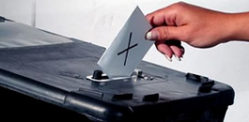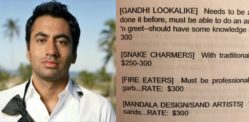"to evaluate advertising guidelines on harmful stereotypes."
According to the Advertising Standards Council of India (ASCI), Indian adverts are stereotyping women.
A study of over 600 commercials found the overuse of stereotypical and harmful tropes against women in advertising.
The industry, worth an estimated £6 billion annually, often portrays the male gaze as being acceptable, the research found.
The GenderNext study, led by Futurebrands Consulting, also found several other problematic issues in the portrayal of women.
Many ads already broadcast appear to have sensualised the act of eating and suggested that women are irresponsible spenders.
As well as this, women are shown as the only ones responsible for housework and considered lower down in the tech-hierarchy.
Male celebrities have also been seen condescending women in the ads across various industries including finance and education.
Lead author Lipika Kumaran said: “While there are some positive moves, mainstream advertising still heavily borrows from an inventory of overused, and sometimes harmful gender stereotypes.”
Santosh Desai, Managing Director of Futurebrands Consulting added:
“While things are changing and brands are moving away from overtly exploitative advertising, there are significant challenges as there are both subtle and non-subtle ways through which gender portrayals are skewed.
“There is also a substantial gap between how gender is depicted in ads and how women actually see themselves.
“Therefore, advertising, which was historically seen as the most progressive medium of gender representation, needs to catch up.”
ASCI is a self-regulatory industry watchdog, which can issue guidelines but not enforce them.
Its study proposed establishing a category agnostic framework, ‘The SEA (Self-esteemed-Empowered-Allied) Framework’.
This would guide stakeholders to build empathy and aid evaluation in their representation of women.
The research also suggested a 3S screener of subordination, service and standardisation for scripts or storyboards, casting and styling to identify any red flags.
ASCI chairman Subhash Kamath said:
“GenderNext acts as a guide for stakeholders – brand owners, marketers and advertising professionals – to aid the creation of more progressive depictions of women in advertising.
“The deep insights on women, and what they feel about advertising is a fantastic input into advertising creation, and we hope that brands and advertisers will be motivated by the findings to depict women in more progressive ways.
“We also intend to set up a task force to evaluate advertising guidelines on harmful stereotypes.”
It comes after a recent analysis by UNICEF in its ‘Gender Bias and Inclusion in Advertising in India‘ report.
It found that when women are depicted as working in paid jobs, they tend to only sell beauty and domestic products to other women.
The beauty sector is currently a key industry in India, with a market value of more than £7 billion as of 2020, according to Euromonitor International.
The advertising industry is currently worth an estimated £5 billion, according to Statista.





























































